Communication has evolved beyond traditional text messages with the rise of smartphones. Sending audio messages has become a popular and convenient way to convey thoughts, emotions, and information. If you’re an iPhone user looking to harness the power of audio messaging, you’re in the right place. In this comprehensive guide, we’ll walk you through everything you need to know about sending audio messages on your iPhone.
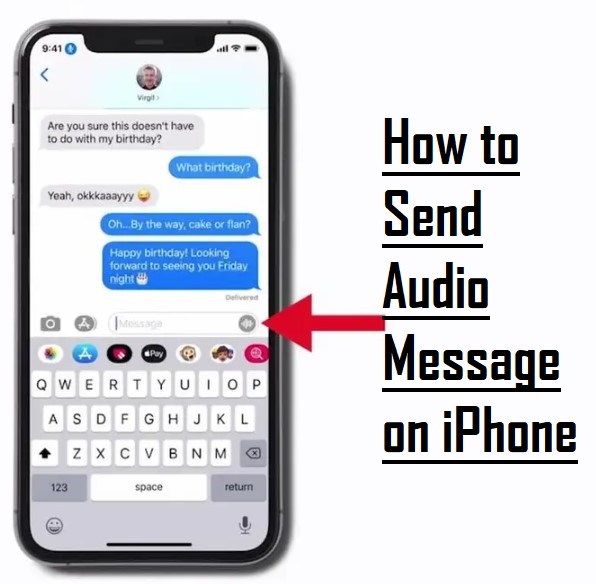
Getting Your iPhone Ready for Sending Audio Messages
To prepare for sending an audio message on your iPhone, it’s crucial to ensure that your device is up to date with the latest iOS version. This ensures optimal performance and compatibility with messaging features.
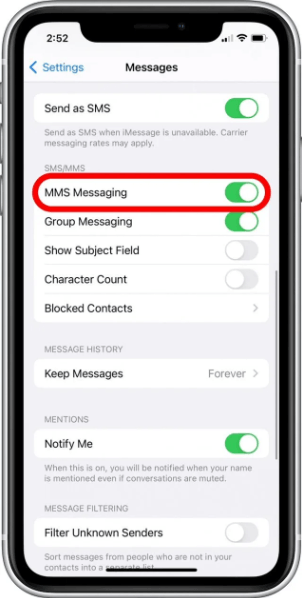
Next, confirm that both iMessage and MMS messaging are enabled on your device. You can do this by navigating to Settings, then selecting Messages. Within the Messages settings, check that both iMessage and MMS Messaging options are toggled on. By following these steps, you’ll ensure that your iPhone is ready to send audio messages seamlessly, without encountering any compatibility issues or messaging restrictions.
Sending a Voice Message with Messages App
- Navigate to the Messages app on your iPhone.
- Open the conversation where you wish to send a voice message or initiate a new one.
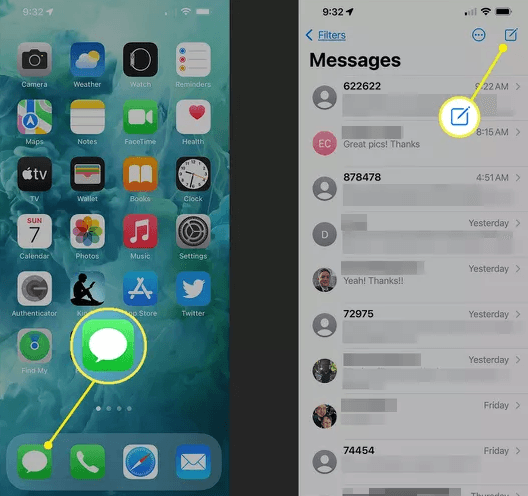
- Look for the plus sign icon located to the left of the text field.
- For iOS 16, tap the Apps icon situated below the text box. In iOS 17, select the Audio option directly, which resembles a waveform.
- Choose the “Audio†option from the menu. You may need to scroll down to locate it.
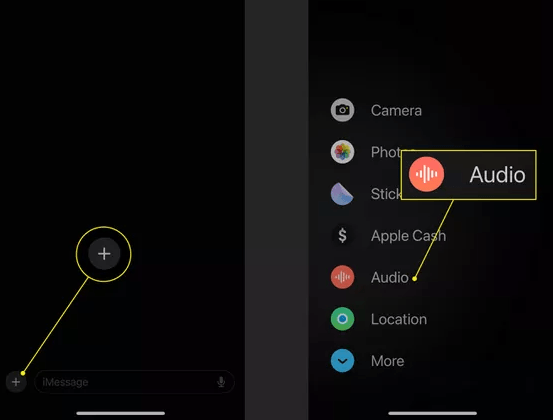
- Begin recording your message; the app will automatically start recording, indicated by a red bar in the text box.
- If you’re using iOS 16, you might need to tap the microphone icon to the right of the message field. Tap once to start recording, or tap and hold to send the message immediately upon releasing the button.
- Speak your message clearly and concisely, then tap “Stop†to conclude the recording.
- Preview your audio message by tapping “Play,†or if satisfied, tap “Send†to share it. You can also cancel the recording by tapping “X.â€
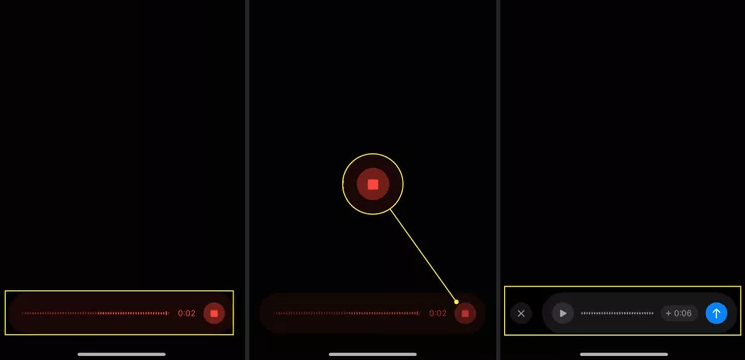
Note: Be aware of the limitations of using Messages for voice messaging: Currently, you can only send voice messages to other iPhone users; recipients with Android phones won’t receive them.
Additionally, audio messages expire two minutes after being listened to unless the recipient chooses to keep them or disables the expiration feature in Settings > Messages.
If your recipient doesn’t use an iPhone or if you want to avoid message expiration, consider using Voice Memos to share your audio message.
Sending an Audio Message on iPhone with Voice Memos
- Launch the Voice Memos app on your iPhone by tapping its icon.
- Locate the red Record button at the bottom of the screen and tap it once to start recording your message.
- Speak clearly and concisely into your iPhone’s microphone. You’ll observe the duration of your recording displayed on the screen as you speak.
- Once you’ve completed your message, tap the red Stop button to end the recording process.
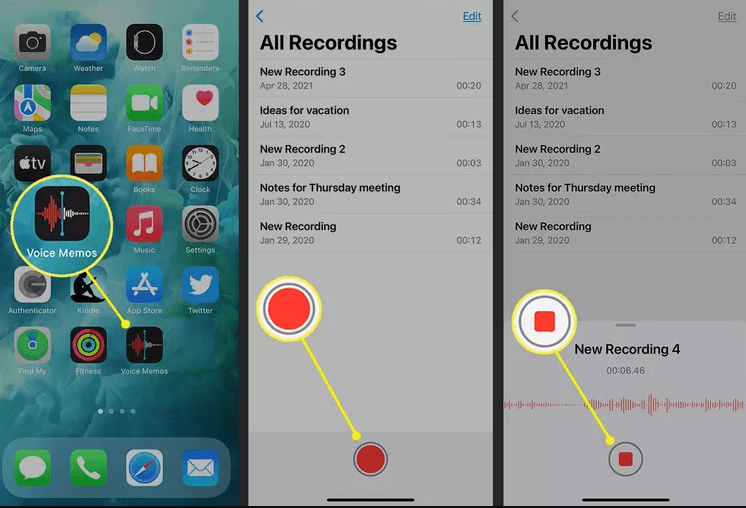
- Your recording will appear in the top section of the screen. Tap the Play button to listen to it and ensure it sounds as desired.
- To share your recording, tap the three dots located next to the recording’s name.
- If you wish to rename the recording before sharing it, tap the current title and enter a new one.
- Select the “Share†option from the menu.
- A Share Sheet will appear with various sharing options available depending on your iPhone’s settings. Choose the desired sharing option, such as sending the audio message via text message, email, or a cloud storage service like Dropbox.
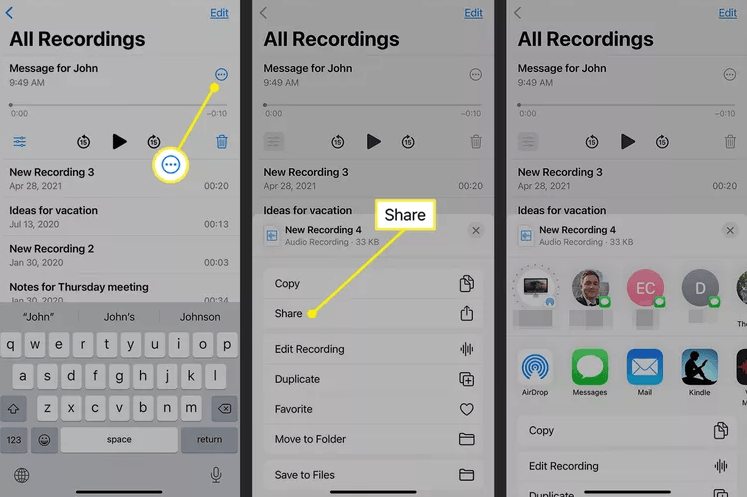
It’s worth noting that when you send a recording using Voice Memos, it will be formatted as an M4A file. This means that the recipient can use any audio player they prefer to open and listen to the recording.
How to Stop Audio Messages from Expiring on iPhone
- Begin by opening the Settings app on your iPhone.
- Locate and tap on the “Messages†option within the Settings menu.
- Within the Messages settings, find the section labeled “Audio Messages.â€
- Tap on the “Expire†option within the Audio Messages section.
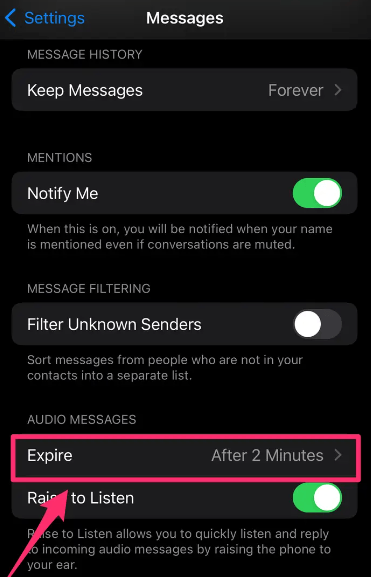
- By default, audio messages are configured to expire after two minutes. To prevent this expiration, tap on the option labeled “Never.â€
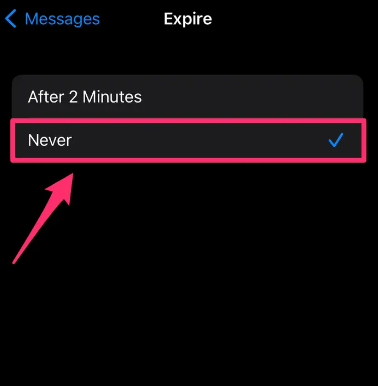
How to Save Audio Messages on iPhone
- Upon receiving an audio iMessage, play the message to initiate the countdown timer, which lasts for two minutes.
- After listening to the audio message, locate and tap the option labeled “Keep†beneath the message.
- By selecting “Keep,†the audio message will be permanently saved within the Messages app, ensuring that it remains accessible for playback at any time.
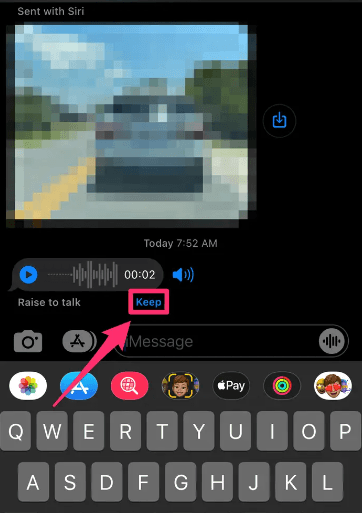
Troubleshooting Common Problems
When encountering issues with sending audio messages on your iPhone, troubleshooting common problems can help resolve them efficiently. Here are some steps to address common issues:
- Ensure network connectivity: Before sending audio messages, ensure that your iPhone is connected to a stable network, either Wi-Fi or cellular data, to facilitate the transmission of messages.
- Verify recipient’s device compatibility: Check if the recipient’s device supports audio messages. Some devices may not be compatible with certain message formats, leading to delivery failures.
- Restart Messages app or iPhone: If problems persist, try restarting the Messages app or your iPhone. This simple step can often resolve minor glitches or software issues that may be affecting message delivery.
Tips for Effective Audio Messaging in iPhone
Now that you know how to send and receive audio messages on your iPhone, here are some additional tips to enhance your audio messaging experience:
- Speak Clearly: Enunciate your words clearly to ensure that your message is easily understood.
- Mind the Background Noise: Find a quiet environment when recording your message to minimize background noise and ensure clarity.
- Keep it Concise: While audio messages offer more expressiveness than text, aim to keep your messages concise and to the point.
- Use Emotion: Take advantage of the medium to convey emotion and tone effectively. Let your personality shine through!
- Practice: Like any form of communication, practice makes perfect. Experiment with different recording techniques to find what works best for you.
Bonus Tip: Hollyland Lark M1 Microphone is your ultimate companion for enhancing audio messaging on your iPhone. With its compact and lightweight design, the Lark M1 is perfect for on-the-go communication. Simply plug it into your iPhone’s Lightning port, and you’re ready to start recording crisp and detailed audio messages with ease.

Hollyland Lark M1
Wireless Lavalier Microphone with High-Quality Audio.
Learn MoreConclusion
Audio messaging adds a dynamic dimension to digital communication, allowing you to express yourself in ways that text alone cannot. From utilizing the Messages app to exploring alternative options like Voice Memos, you now have the tools and knowledge to effectively convey your thoughts and emotions through audio messaging. Remember to troubleshoot common issues that may arise and stay connected with the latest updates and features on your device.
We value your opinion! Share your thoughts and experiences with us. Did you find this article helpful in mastering audio messaging on your iPhone? Were the instructions clear and easy to follow? Do you have any additional tips or suggestions for improving the audio messaging experience? Your feedback helps us tailor our content to better meet your needs and ensure that we continue to provide valuable insights and guidance. Leave your comments below and let’s keep the conversation going!
Frequently Asked Questions
How long can an audio message be on an iPhone?
Audio messages on iPhone can typically be up to two minutes long. However, this duration may vary depending on factors such as your iPhone model, iOS version, and available storage space.
Do audio messages sent through iMessage use data?
Yes, audio messages sent through iMessage use data if you’re not connected to Wi-Fi. When sending an audio message over cellular data, it will consume a small amount of your data plan. However, if you’re connected to Wi-Fi, sending audio messages won’t count against your cellular data usage.
Why can’t I send an audio message to a non-iPhone user?
Audio messages sent through iMessage are only compatible with Apple devices, such as iPhones, iPads, and Macs. Non-iPhone users may not be able to receive audio messages sent via iMessage. In such cases, you can send a traditional text message or use a messaging app that supports multimedia messages (MMS) to send audio messages to non-iPhone users.
How do I save an audio message I received or sent?
To save an audio message you received, simply tap and hold the audio message in the Messages app until a menu appears. Then, select the “Save†option to save the audio message to your iPhone’s Photos app.
The categories of Modular UPS Power Supply are described as follows:
I. Definition and overview
Modular UPS power supply is a design architecture that divides the UPS system into multiple independent modules. Each module contains complete power conversion functions, such as inverters, rectifiers, batteries and control circuits, and can be operated independently, and modules can be added or reduced according to demand to adapt to different load requirements. This design improves the flexibility, reliability and maintainability of the UPS system.
Second, the main composition
Modular UPS power supply usually consists of the following main components:
Rack: The infrastructure that supports and holds each module.
UPS power module: Contains core power conversion components such as inverters, rectifiers, and chargers, which are responsible for converting input mains or battery power into stable AC power output.
Static switching module: Switches between mains and inverter output to ensure continuity of power supply.
Display communication module: Provides user interface and communication interface for monitoring UPS status and remote management.
Battery pack: Provides backup power to the UPS system to ensure continuous power supply in the event of a mains interruption.
Iii. Characteristics
Scalability:
Modular UPS allows the flexibility to expand or shrink system capacity based on load demand, by increasing or decreasing the number of modules.
Redundancy:
Each module has independent power and control functions, so the system is highly redundant. When one module fails, the other modules can continue to work, ensuring the continuous power supply of the load.
High reliability:
Due to the modular design, fault isolation is easier, and the failure of one module will not affect other modules, thus improving the reliability and availability of the entire system.
Simplify maintenance:
Modular design makes maintenance easier. When a module needs to be serviced or replaced, it can be done separately without the need to shut down the entire system, reducing maintenance time and interference with the load.
High performance:
Modular UPS systems typically have a high energy utilization rate, with the ability to adjust the number of modules according to load demand to provide greater efficiency. (
Intelligent management:
Many modular UPS are equipped with intelligent management systems, which can monitor the status of power supply, battery status, load, etc., and have fault diagnosis, automatic switching, remote monitoring and other functions.
Modular Uninterrupted Power Supply,Modular UPS system, high frequency UPS price, Modular UPS
Foshan Keylewatt Technology Co., LTD , https://www.keylewatt.com